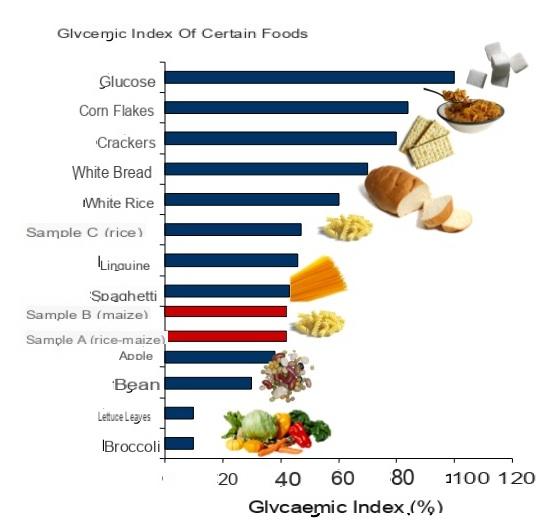
Complex Carbohydrates and Glycemic Index
It is now known that complex carbohydrates are essential for everyone, especially for an athlete.
In fact, foods such as pasta, rice, bread provide me with long-term energy.
So how is it possible that these same foods have such a high glycemic index?
It is a contradiction because I know that all foods with a high glycemic index raise the blood sugar level a lot and then lower it quickly. It would seem a contradiction.
Is it worth eating pasta and bread or not?
Glycemic index of bread and pasta
Rice and pasta contain complex carbohydrates. It means that they are made up of long chains of simple sugars linked together.
During the digestive process these chains must be broken, as our body can only absorb simple sugars. The breaking of these chains takes time and for this reason the simple carbohydrates are absorbed a little at a time, as the internal bonds of the polysaccharides are broken.
Even if made up of complex carbohydrates, bread, pasta and other cereals are still made up of carbohydrates.
Furthermore, if taken alone they find a favorable digestive environment and are in any case broken down with a certain ease. Hence the high average value of their glycemic index.
If taken together with fiber or other foods, digestion will instead be slowed down, simple carbohydrates will enter the circulation more slowly and blood sugar will not undergo significant changes. For this reason, whole grains have a lower glycemic index and for the same reason some biscuits rich in sugar but to which butter and margarine are added may have a lower glycemic index than pasta.
And then there are all the other variables such as cooking, variety and quality of food / ingredients and above all there is the much more important glycemic load (produced between the glycemic index and the amount of carbohydrates ingested).
Rice and pasta are medium glycemic index foods while bread has higher variability (depends on cooking, shape, salt, flour, etc.). These foods are rich in complex carbohydrates, which provide long-term energy.
However, if taken alone and in high quantities, they cause an excessive glycemic increase with all the consequent negative effects (the reason why white pasta makes you fat or not is widely explained in the following article: Does white pasta make you fat?) .
Proteins and Glycemic Index
We all know that the first energy source for our body are carbohydrates, then there are fats and in extremis the amino acids of proteins.
So, taking for example 30 g of whey protein (without taking carbohydrates or fats) and after a short time performing aerobic activity for half an hour, will the same proteins be used for energy purposes?
Or will reserve fats be used? In other words, does the body (in the absence of carbohydrates or fats) prefer to use the fats or proteins that have just been taken first?
If you take 30 g of protein and go for a run after a few hours, nothing particular happens. We have mechanisms capable of keeping blood sugar constant both if we consume many carbohydrates (insulin) and if we consume few (glucagon).
Let's focus on the action of the latter hormone. Glucagon promotes glycogenolysis in the liver (production of glucose from glycogen). In this way, a certain amount of glucose is released into the circulation which allows to keep the blood sugar constant.
Le stocks of glycogen of our organism are a very important parameter.
If these stocks are exhausted, before transforming the excess carbohydrates into fats, our body will try to recharge them until they are completely saturated.
If stocks are empty and a protein-rich dish with zero carbohydrates is consumed, a significant amount of protein will be used for energy.
In this case, if you go for a run, some of the energy will come from the demolition of amino acids.
Regarding the consumption of fat:
- if you are really low on glucose, fats cannot be burned for energy purposes because they need glucose and oxygen to be broken down. In these cases the fats are transformed into ketones and feed the brain, which cannot use other nutrients except glucose and ketone bodies.
- if you have some glucose left but you still train in hypoglycemic conditions your body will tend to preserve the little glucose left by burning mainly fat.
The latter situation is more likely, while the former occurs only after "very" prolonged fasting.
We must not neglect the discussion on the optimal training intensity. In this regard, I refer you to reading the article Aerobic activity and fat burning which ends with a sentence that should make you think, given that you are a bodybuilder: "to lose weight, it is therefore advisable to go through the increase of lean mass".
For further information: Glycemic index of foods


























